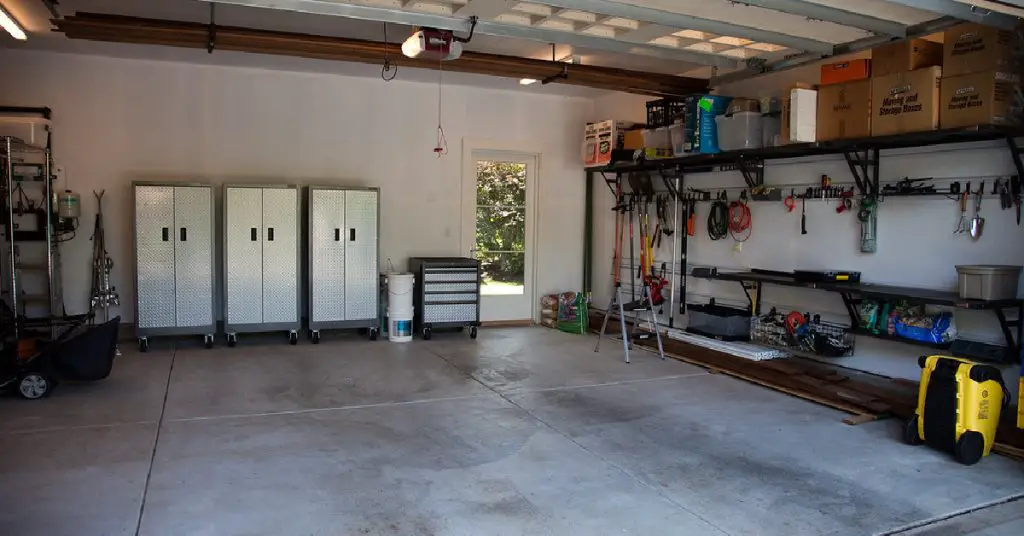If you’ve ever experienced the frustration of frozen paint, you know how important it is to protect your paint from freezing temperatures. Freezing can cause the paint to separate, form clumps, and become unusable. In colder climates, storing paint in a garage can be challenging, but with the right techniques and precautions, you can safely store your paint and prevent it from freezing. In this blog post, we will explore tips and tricks for how to keep paint from freezing in garage, ensuring that your paint remains in good condition and ready for use when you need it. From using the right can opener to creating insulated storage spaces and understanding the importance of temperature control, this guide will help you maintain a well-organized and safe paint storage area in your garage.
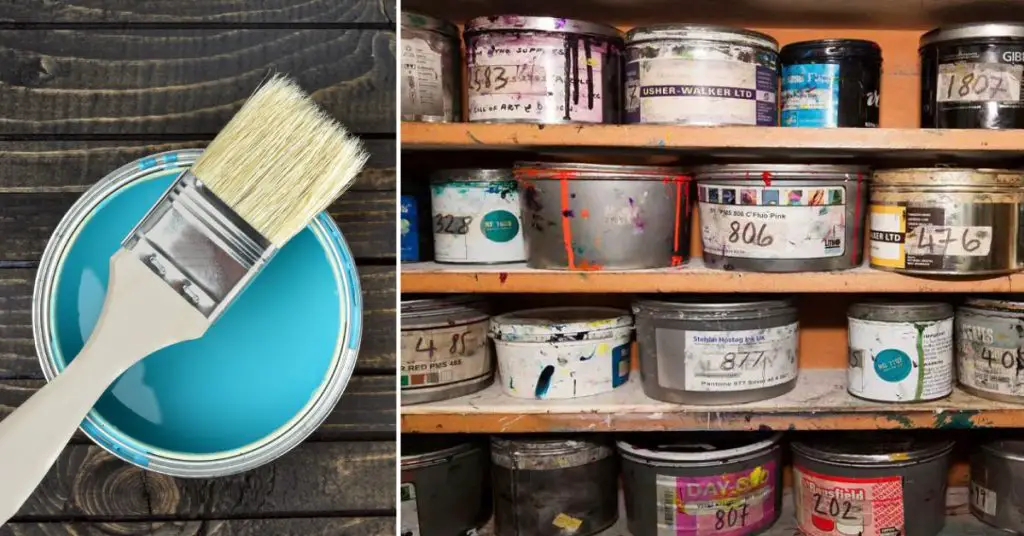
4 Easy Steps for How to Keep Paint From Freezing in Garage
Here are some simple steps you can follow to keep your paint from freezing in the garage.
Step 1: Using the Right Can Opener and Sealing Techniques
A. Selecting the Ideal Can Opener
When it comes to painting storage, using the right can opener is crucial. Utilizing an inappropriate tool, such as a screwdriver, can dent the lip of the lid, making it difficult to achieve a proper seal. Instead, invest in a dedicated paint can opener explicitly designed for the purpose. These openers are designed to preserve the integrity of the paint can’s the seal, ensuring that it remains airtight and preventing your paint from freezing.
B. Properly Sealing the Paint Can with Plastic Wrap
Before storing your paint can in the garage, it’s essential to ensure a tight seal. One useful trick is to place a layer of plastic wrap over the opening of the paint can before resealing it. This creates an additional barrier to help keep air and moisture out, maintaining the quality of the paint and protecting it from freezing temperatures.
C. Storing Paint Cans Upside Down
An additional measure to protect your paint cans from freezing is to store them upside down. This method prevents rusting and helps maintain an airtight seal around the lid. Keeping the paint in contact with the lid creates a natural seal that minimizes air exposure and reduces the risk of freezing. However, before storing your paint cans upside down, make sure the lids are tightly sealed to prevent leakage.
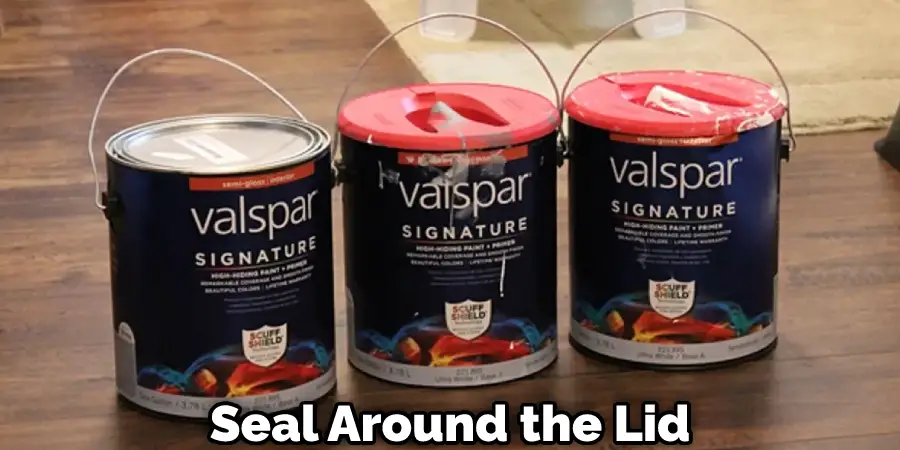
Step 2: Insulating and Heating Paint Storage
A. Creating an Insulated, Heated Enclosure for Paint Storage
One effective way to protect your paint from freezing temperatures is to create an insulated, heated enclosure within your garage. This can be achieved by constructing a small insulated space around where your paint is stored. By using materials like rigid foam insulation, OSB, and pegboard, you can build a well-insulated space that retains heat and protects your paint from the cold.
B. Using a Lizard Heater and a Thermo-Cube
To maintain a consistent temperature within your insulated enclosure, consider using a lizard heater and a thermo-cube. A lizard heater is a low-wattage, energy-efficient heating device commonly used in reptile enclosures. Combined with a thermo-cube, and a temperature-controlled electrical outlet, you can maintain a steady temperature within the enclosure. The thermo-cube turns the heater on when the temperature drops below a specific threshold and off when it rises above a set temperature, ensuring that your paint stays within the optimal temperature range.
C. Insulating the Floor and Enclosing the Bottom Shelf
In addition to insulating the walls of your paint storage enclosure, don’t forget to insulate the floor. Cold can easily seep through the garage floor, so adding insulation to the base of your storage area is essential. Cut and notch materials like rigid foam insulation and OSB to fit the floor beneath the paint storage shelf, creating a barrier between the cold ground and your paint cans. Enclose the bottom shelf of the storage area with insulation and other materials to further protect your paint from the cold.
Step 3: Choosing the Right Storage Location
A. Storing Paint in an Attached Garage or a Warm Place
One of the best ways to protect your paint from freezing is to store it in a consistently warm location. If you have an attached garage, this can be an ideal spot, as the shared walls of your home may provide some insulation and warmth. If an attached garage is not an option, consider finding an alternative storage area such as a storage shed or other enclosed space that will shelter your paint from the elements and maintain a higher temperature than an unheated garage.
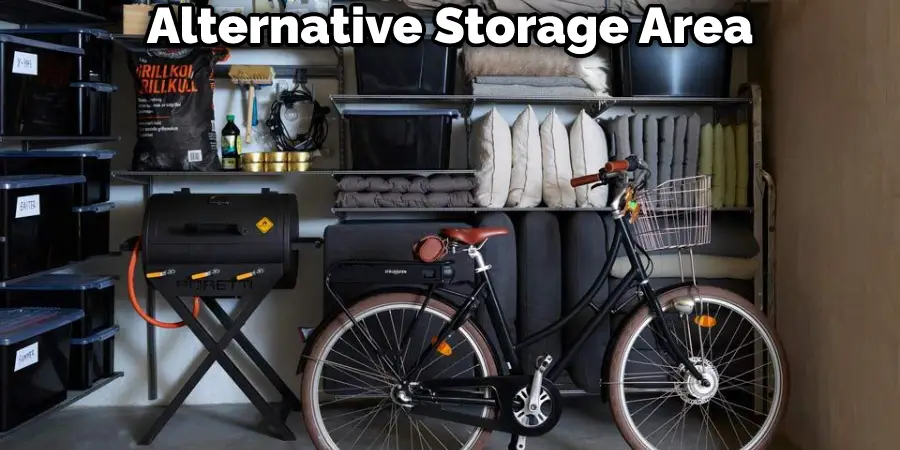
B. Avoiding Direct Sunlight and Damp Locations
When choosing a storage location for your paint, avoid areas with direct sunlight or high humidity. Sunlight can cause paint cans to heat up, which can damage the paint inside, while damp locations can promote rust and cause the paint to degrade over time. Select a dry, shaded area that offers consistent temperature and low humidity for optimal paint storage conditions.
C. Storing Paint in a Lined Metal Can, Glass, or Plastic Container
The type of container you use for storing paint can also affect its longevity and resistance to freezing. Most latex paints, including popular brands like AURA®, REGAL®, and ben®, should be stored in a lined metal can to prevent rust or in a glass or plastic container. These containers provide an additional layer of protection against temperature fluctuations and moisture, helping to preserve the quality of your paint and prevent it from freezing.
Step 4: Paint Additives and Temperature Considerations
A. Using Paint Additives for Freeze Protection
Some paint additives are designed to help prevent paint from freezing and can be a valuable addition to your paint storage strategy. When mixed with paint according to the manufacturer’s instructions, these additives can lower the freezing point of the paint and provide an extra layer of protection against cold temperatures. Always consult the paint manufacturer’s guidelines and recommendations for suitable additives and their proper usage to ensure the best results.
B. Understanding Temperature Requirements for Latex and Oil-Based Paints
Different types of paints have different temperature requirements for both storage and application. Knowing these temperature ranges is crucial for maintaining the quality of your paint and ensuring successful painting projects.

For oil-based paints, the ideal storage and application temperature range is typically between 40 and 90 degrees Fahrenheit (4 to 32 degrees Celsius). Latex paints, on the other hand, require a slightly higher temperature range, generally between 50 and 85 degrees Fahrenheit (10 to 29 degrees Celsius). Keeping your paint within these temperature ranges will help prevent freezing and ensure that the paint remains in good condition for future use.
By understanding and adhering to the specific temperature requirements of your paint, you can help prolong its lifespan and maintain its quality, making your painting projects more successful and enjoyable.
You can also check out to Paint Aluminum Garage Door
3 Additional Storage Tips for How to Keep Paint From Freezing in Garage
Tips 1: Packing Paint Containers in Bags or Boxes with Shredded Newspaper
Another way to provide insulation and protect your paint from freezing is to place the paint containers in bags or boxes filled with shredded newspaper. The newspaper acts as an insulating material, trapping air and preventing the paint from losing heat too quickly. This added layer of protection can make a significant difference in maintaining the temperature of your paint and preventing it from freezing.
Tips 2: Keeping the Garage Warm with Heaters
If creating an insulated enclosure for your paint is not feasible, consider using heaters to maintain a warmer temperature in your garage. Portable space heaters can be an effective way to raise the overall temperature in the garage and provide a more suitable environment for paint storage. However, it’s essential to use heaters safely and follow the manufacturer’s guidelines to prevent any potential hazards.
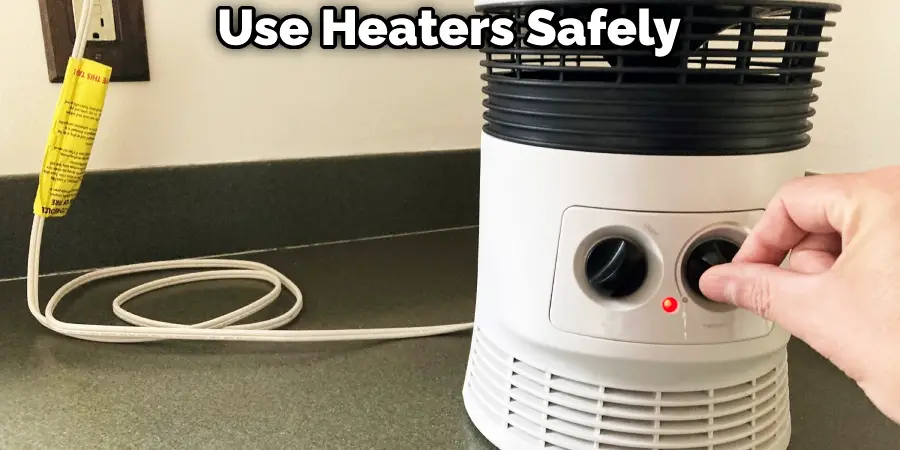
Tips 3: Storing Paint in Air-Tight Containers
Properly sealing your paint cans is essential for preventing freezing and maintaining the paint’s quality. To further protect your paint, consider transferring it to an air-tight container. Follow these steps for optimal storage:
- Place a layer of plastic wrap over the top of the paint can to create an air-tight seal.
- Gently pound the lid into place with a rubber mallet.
- Store the paint can upside down to ensure a tight seal and reduce air exposure.
By employing these additional storage tips, you can help keep your paint in excellent condition and protect it from freezing, ensuring it’s ready for use whenever you need it.
You Can Check It Out to Paint Unfinished Garage Walls.
FAQs About How to Keep Paint From Freezing in Garage
Will Paint Freeze in an Unheated Garage?
Yes, paint can freeze in an unheated garage, particularly if the temperature fluctuates wildly or drops below the freezing point. Latex paint, being water-based, is most susceptible to freezing and can freeze at 32 degrees Fahrenheit. To prevent paint from freezing, consider creating an insulated, heated enclosure or storing it in a more temperature-controlled environment.
Can You Store Paint in an Unheated Garage?
Storing paint in an unheated garage is not recommended due to the risk of extreme hot or cold temperatures, which can chemically alter the paint and make it unusable. Paint, especially water-based latex paints, can solidify or crack when exposed to freezing temperatures. If you must store paint in an unheated garage, consider creating an insulated, heated enclosure to protect it from temperature fluctuations.
At What Temperature Does Paint Freeze?
Paint can freeze at different temperatures depending on the type and ingredients. Water-based paint typically freezes at around 32°F (0°C) due to its water content. Oil-based paint is less likely to freeze as it contains oils and resins that become more viscous at lower temperatures, but some paints may freeze at temperatures as low as -10°F (-23°C). To be sure, check the specific paint product’s guidelines.
Conclusion
Proper paint storage plays a crucial role in maintaining the quality and longevity of your paint, especially when it comes to preventing it from freezing. By following the tips and tricks outlined in this guide, you can create a well-organized and safe paint storage area in your garage that keeps your paint protected from the cold. From using the right can opener and sealing techniques to creating insulated storage spaces and understanding temperature requirements, you can effectively preserve the quality of your paint and ensure it’s ready for use in any future projects.
Remember that investing time and effort in proper paint storage not only saves you money by reducing paint waste but also contributes to successful painting projects. By taking care of your paint and keeping it safe from freezing, you can enjoy a hassle-free painting experience and achieve the results you desire.


